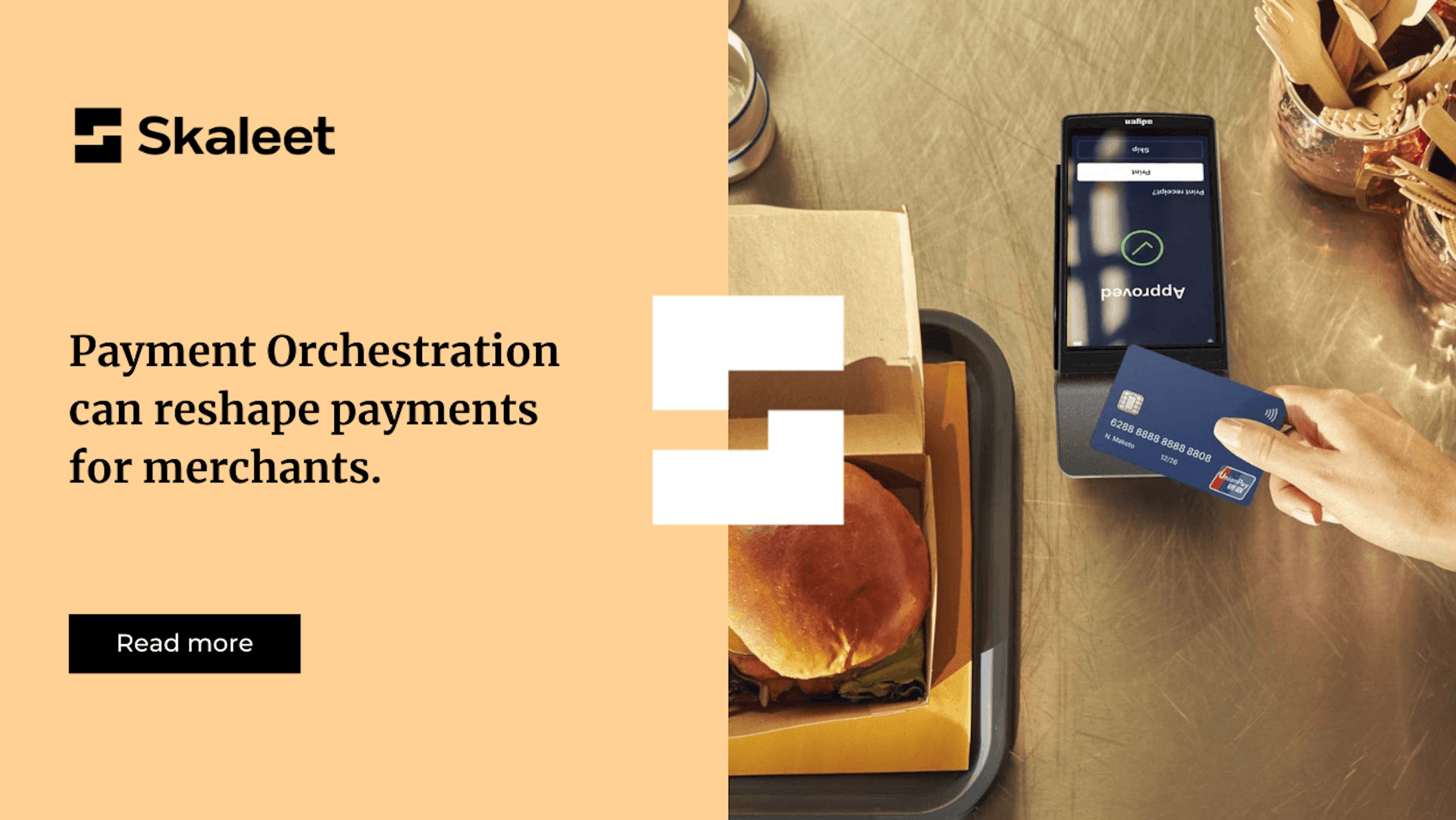
January 25th, 2022 • Open Economy
Contributor or Orchestrator, make your predictions now! 🎲
Among the 772 companies that achieved unicorn status, 23% were built on ecosystem business models.
March 22nd, 2022 • Payments

Payments orchestration has become a hot topic in e-commerce. It is a sector where several payment providers are often needed to handle customer conversion, increase cost savings, and improve anti-fraud procedures. Faced with the evermore complex task of managing payments across geographies, sales channels, and use cases, merchants are looking for ways to adapt their payment infrastructure and grow their business, while continuing to offer an excellent customer experience. Seamlessly.
The evidence is clear. Today, more than 60% of retailers need to work with several payment providers, while over 25% see implementing payments orchestration as an important step in their transformation as a business. Payments orchestration is becoming an inevitable and significant consideration, one that demands a change in the capacities of PSPs (Payment Service Providers) to better respond to retailers’ needs.
Alongside this, new technologies like the Cloud, Plug-and-Play ecosystems, and APIs have emerged in the payments sector. With the arrival of these new tools, payment service provider business models are inevitably expanding into payments orchestrations, a model set to grow sharply in the next few years.
Payments orchestration introduces a “many-to-many” tech mindset with a product designed to lighten the daily load for merchants through greater flexibility and connectivity, enriched data, and easier transaction management. This article considers the rise of the payments orchestration phenomenon, its use cases, and how Skaleet can help you build this type of platform.
The first technical PSPs (or gateways) appeared in the early days of e-commerce, between 1990–2000. Their product and operating model consisted of executing online payments. These PSPs did not handle the collection or settlement of funds. Their role was simply to be the technical integrator between the merchants and payment acquirers (i.e. a bank or other financial institution).
Between 2010–20 these PSPs changed; new players emerged, some specialising in “collecting”, like Stripe and Adyen, with the technical capacity to collect through new payment methods—APMs or Alternative Payment Models—along with an extended range of complementary services (e.g. tools for managing fraud, handling multiple currencies). This “collecting” model quickly became more widespread and is now the main business model for PSPs and for retailers. The transformation of technical PSPs into specialist “collecting PSPs” is down to market development characterized by:
Today, Payments Orchestrator PSPs have emerged, with a technological native design to streamline the payment infrastructures of businesses by eliminating the complications involved in managing a number of suppliers. This is a niche in the merchant payment world, but orchestrators are starting to win increasingly larger shares of the European market.
To better understand the impact of these payments orchestrators, it is useful to consider the One-Stop-Shop concept which continues to be the most relevant and robust concept on the merchant payment market at the moment. This model is actually tricky for multinationals to implement. Geographical location, incoming and outgoing payments, system integration, reconciliation, risk management, compliance, and use cases bring a great number of complexities that a single PSP cannot handle or, above all, solve. Faced with this reality, merchants are looking at a complex flywheel when it comes to managing various payment and value-added service providers that merchants need to integrate themselves.
One of the main benefits of payments orchestrators dealing with the One-Stop-Shop concept is to carry out Smart Routing, ie. intelligent routing which improves transaction success and sales conversions. Merchants can focus increasingly on optimizing conversion and the possibility of integrating various processing options to improve results. Different from collecting PSPs, payments orchestrators enable the switching of payment volumes, thus reducing costs associated with historic acquirers and payment collecting PSPs. Payments orchestrators also enable transaction abstraction, where transactions are increased and manipulated to be able to provide new, specific use cases. For example, they are able to offer several payment methods, including payment cards, wallets, Buy Now Pay Later, account-to-account, payment on delivery or split payments with authorizations, and self-authentications. Fraud management can be optimized in a similar way to allow merchants to aggregate several suppliers and data sources in a single decision engine.
In terms of data, multinational merchants, inevitably using many payment and service providers, need to centralize data, and payments orchestrators can aggregate their data across suppliers to facilitate decision-making, improved financial management, market support, and reconciliation for merchants.
In terms of regulations, payments orchestrators help merchants with compliance, with PSD2 particularly which forces marketplaces to become either licenced payment institutions or to outsource their financial flows to PSPs.For multinational marketplaces working with many payment providers, payments orchestrators help streamline the integration of seller (sub-merchant) KYC and management (sub-merchants) while pushing the many processors into a single payment point. They also help mitigate PCI compliance by removing sensitive data while improving token management. Indeed, the orchestrators will provide a more flexible tokenization service based on the Visa and Mastercard networks allowing merchants to use the same token on several payment processors and collectors.

Payments orchestration is seen most in e-commerce but it is also expanding into POS (Point-of-Sale). Beyond different sales channels and retailer localisation, examples of payments orchestration use cases include:
A payment orchestration can appear similar to a traditional technical PSP: both want to be connected to acquirers and transmit transactions; both are tech-based; and for both of them; extending each, the extent of their connectivity in relation to acquirers and payment methods defines the true added value that they bring to merchants. However, there are essential differences between a payments orchestrator and a technical PSP:
The ability to orchestrate payments and related services across channels, geographical areas, and use cases via a single technical integration is a strong value proposition for merchants. Skaleet’s platform is a possible solution that can help you build an orchestration platform for your payment institution.
With this platform you will be able to orchestrate your payments via open data architecture, an orchestration model enabling integration of payment collectors (PSPs and acquirers), value-added service providers (fraud management, data analytics, compliance, and compatibility), and distributing different payment acceptance and methods of payment to marketplaces and POS players via APIs.
Use our expertise to manage third-party account receipts, holding accounts, Pay-In / Pay-Out between the marketplace and the credit institution if you want to use Smart Routing for your transactions to respond to the needs of your merchants.
Orchestration specialists are sure to emerge to meet this new demand and will experience rapid growth. We expect the future of payment and proposition technology to be shaped by principles of orchestration that embrace the realities of complex ecosystems.
Innovation. FinTech. Digital Banking. Neobanks. Open Banking. Core Banking. Cloud.

January 25th, 2022 • Open Economy
Among the 772 companies that achieved unicorn status, 23% were built on ecosystem business models.